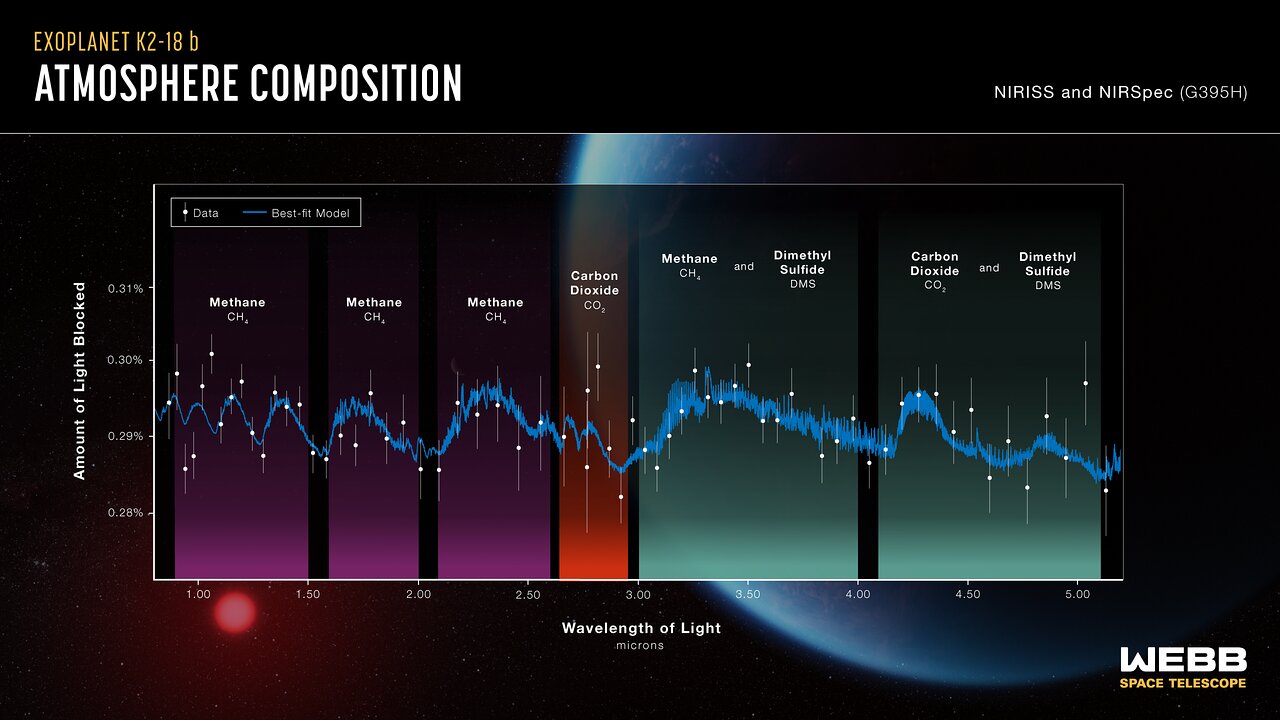Spectra of exoplanet K2-18 b
Spectrum of K2-18 b, obtained with Webb’s NIRISS (Near-Infrared Imager and Slitless Spectrograph) and NIRSpec (Near-Infrared Spectrograph), displays an abundance of methane and carbon dioxide in the exoplanet’s atmosphere, as well as a possible detection of a molecule called dimethyl sulfide (DMS). The detection of methane and carbon dioxide, and shortage of ammonia, are consistent with the presence of an ocean underneath a hydrogen-rich atmosphere in K2-18 b. K2-18 b, 8.6 times as massive as Earth, orbits the cool dwarf star K2-18 in the habitable zone and lies 120 light-years from Earth.
[Image description: The graphic shows the spectra of the exoplanet K2-18 b from NIRISS and NIRSpec in the form of a graph, with the vertical y-axis labelled as Amount of Light Blocked and the horizontal axis labelled as Wavelength of Light (microns). The spectra is plotted as dots with vertical short vertical lines across the plot, with the best-fit model as a blue jagged white line.There are green, yellow and light blue vertical columns of varying thicknesses scattered across the plot indicating where variations in the line represent the presence of methane, carbon dioxide, and dimethyl sulphide, respectively. Behind the graph is an illustration of the planet and star.]
Credit:NASA, CSA, ESA, J. Olmstead (STScI), N. Madhusudhan (Cambridge University)
About the Image
| Id: | weic2321b | |
|---|---|---|
| Type: | Chart | |
| Release date: | 11 September 2023, 16:00 | |
| Related releases: | weic2321 | |
| Size: | 3840 x 2160 px | |


